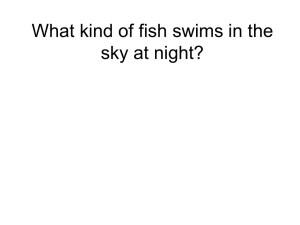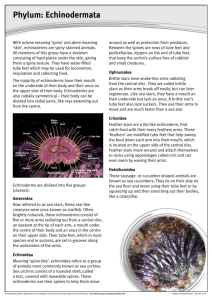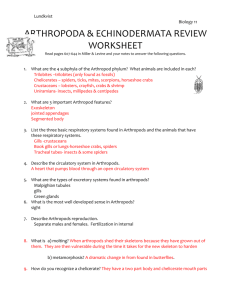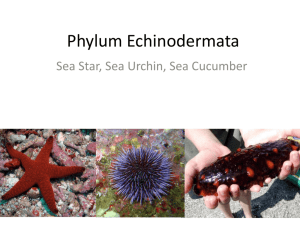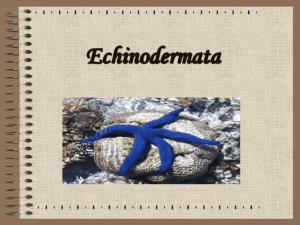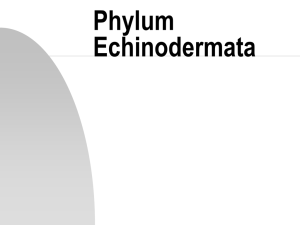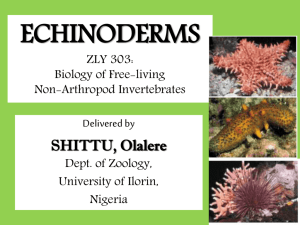Phylum Echinodermata: Sand Dollars, Starfish, and Sea Urchins
advertisement
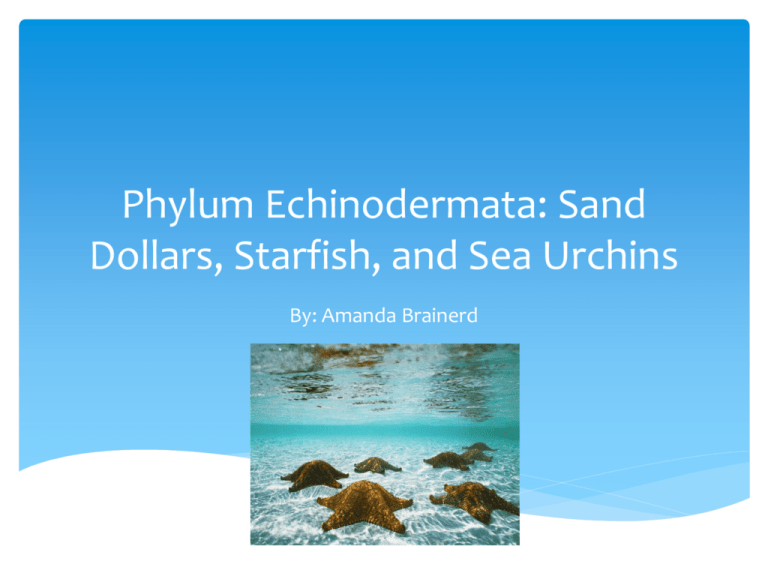
Phylum Echinodermata: Sand Dollars, Starfish, and Sea Urchins By: Amanda Brainerd Key Characteristics Endoskeleton Five-part radial symmetry Water-vascular system Skin Gills No head or brain Anatomy Sieve Ring canal Tube feet Anus Stomach Digestive glands Skin gills Reproductive glands Digestion Simple digestion In through mouth and down esophagus Two-stomach system Intestines Anus Respiration Water vascular system Tube Feet Skin Gills Bumps or Spines on surface Hemolymph Circulation Internal Transport Water vascular system Madreporite Ring Canal Water Tube Feet Excretion Anus Mouth Tube feet and skin gills No real excretion system Diffusion Response Eyespots Nerves Tube Feet Spiny Skin Statocysts Movement Tube and thin layers of muscles Tube feet Water vascular system Suckers and arms Spines https://www.youtube.com/watch?v=cec4YPXBnXk Reproduction Diecious Sexual Reproduction External fertilization Fission and regeneration Larvae settle on ocean floor Examples Facts Echinodermata has approximately 7000 described living species and about 13,000 extinct species known from the fossil record. Brittle Stars can be found at depths as great as 6000 meters. Sea stars have up to 200 light sensitive eye spots. Some species can live up to 10 years. Echinoderms are the most complex of invertebrates. Words Cited http://echinodermsg.blogspot.com/2007/04/digestion.html http://intro.bio.umb.edu/112s99Lect/bodyplans/starfish.html http://echinodermsf.blogspot.com/2007/04/internal-transport.html http://www.mesa.edu.au/echinoderms/ http://www.oceaninn.com/the-nature-preserve/echinoderms/

